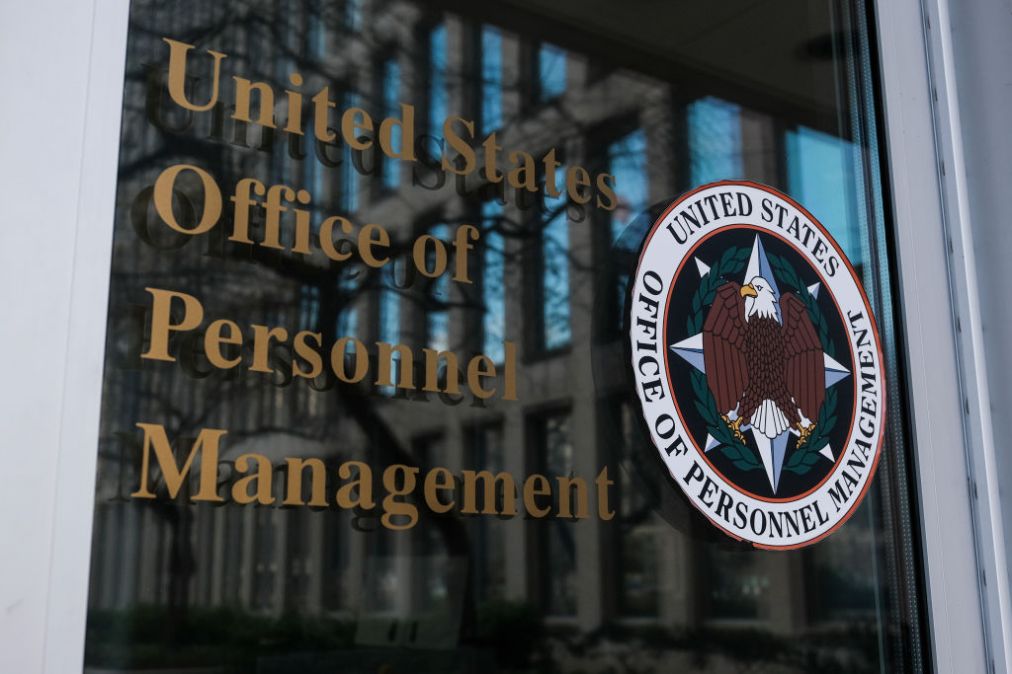DOGE took credit for his team’s work. Now, an OPM alum fights to get his job back

The Office of Personnel Management took a well-deserved victory lap last month in announcing the rollout of the federal government’s first wholly digital retirement application. That “landmark” development, OPM said, was due in large part to the efforts of Elon Musk’s pet project.
“This sweeping modernization effort is a cornerstone of President Trump’s Department of Government Efficiency (DOGE) initiative, established earlier this year to streamline and digitize key federal functions,” the press release announcing the launch said. “Working in close collaboration with DOGE, OPM’s Retirement Services team developed and successfully piloted the new Online Retirement Application (ORA) system, reducing delays and improving the experience for retiring federal employees.”
The framing of that press release struck Syed Azeem — a supervisory IT specialist at OPM until April — as odd, mostly due to the fact that the digitization project for retirement applications had been in the works for years, long before anyone from DOGE waltzed into the government’s personnel agency.
It was “really disappointing to see this administration taking credit for all that work,” Azeem said in an interview with FedScoop. “Let me backtrack — DOGE taking credit for this work when this work was already in flight.”
Azeem, a 13-year government employee across multiple agencies, absorbed that disconnect from the sidelines, as one of the tens of thousands of federal staffers let go via DOGE-instituted reductions in force. Azeem was informed Feb. 27 that his office was being dissolved, and as of April 28, he would no longer have “assignment rights to positions” at his current grade level within his “competitive area.”
In one fell swoop, Azeem and his entire team within the Chief Technology Officer division of OPM’s Office of the Chief Information Officer were eliminated. Some digital services projects were kept alive by DOGE, including the retirement application that the group formerly led by Musk nudged across the finish line. Other projects were killed outright.
The RIF that took out Azeem’s office and others at OPM is now the subject of a class-action appeal that seeks to restore the jobs of those dismissed individuals. Attorneys for Azeem and the other plaintiffs contend that the RIF was done without congressional authorization in violation of the law, and impacted employees — supporting HR functions via IT, procurement, communications and other areas — were not given the chance to compete for their reposted positions.
“The functions [Azeem] was working on and were a core part of his office are being transferred elsewhere into government, as it seems, to DOGE,” said Chloe Barrett, an associate at Gilbert Employment Law, the firm representing the ex-OPM plaintiffs. “The people who … carried out those functions are supposed to be given an opportunity to transfer with them, or at least to compete for them. … They should have been retained over someone who’s brand new to the federal service.”
For Azeem, the dismissal from OPM felt especially crushing given all that he and his team were on the precipice of accomplishing, including the Monday deadline for all agencies to use the electronic retirement application. Whether he gets a chance to resume that work is up to the U.S. Merit Systems Protection Board, but for now, his is another tale of a federal worker who says their service was indiscriminately cut short.
Climbing the federal IT ladder
Azeem had ascended to his management role at OPM following a steady progression of government tech jobs starting in 2008. A CliffsNotes version of his resume includes work on the Treasury Department’s Electronic Federal Tax Payment System, a Department of Defense initiative to modernize the application for business travel, and a handful of IT security projects for Department of Homeland Security components.
He thrived during the first Trump administration, beginning what turned into a three-and-a-half-year stint at the General Services Administration as part of its Technology Transformation Services team. Through TTS’s Centers of Excellence, Azeem supported an Environmental Protection Agency project to modernize school bus fleets, contributed to work at the U.S. Department of Agriculture, and was part of the group that built GSA’s Made in America portal.
After more than a dozen years in government, Azeem moved to the private sector in 2022 as a senior product manager at Capital One, where he said he had “great colleagues” and “learned a lot of great things,” but ultimately missed the “greater sense of mission” he had as a federal employee.
“It’s not the kind of impact you can have working for the federal government. … That kind of scale, you don’t get anywhere else,” Azeem said. “When the right opportunity came along, I knew I was going to come back to the federal government. It was just a matter of time.”
And so, in September of last year, Azeem jumped at the chance to rejoin the public sector. The job at OPM afforded him the chance to modernize legacy systems, build up internal government capacity, and ultimately provide “the most efficient” digital services to the American people.
Efficiency was at the core of all retirement portfolio work at OPM. The long-gestating digital retirement application was close to scaling, Azeem said, meaning retiring employees across all agencies would soon have access to the tool, rather than having to submit a paper application that involved payroll and HR office specialists via the mail.
There was also substantial progress made to modernize Janus, OPM’s cloud-based retirement calculator, and Azeem’s team had started work on a generative AI-powered chatbot paired with a “new and improved” OPM website.
Those projects, Azeem said, “would have made OPM services more efficient, easier to use, and allow the agency to serve its customers in a more efficient and customer-friendly way.”
Then came DOGE.
Cut for the sake of cutting
Neither Azeem nor his manager at OPM had any direct contact with DOGE — in hindsight, a bad omen given the insurgent group’s interest in tech and the OPM digital service leaders’ expertise in those areas.
But Azeem and his boss did have an early meeting with Greg Hogan, who was installed by the Trump administration as chief information officer after Melvin Brown II, a longtime deputy CIO at the agency, was ousted after just a week on the job.
Hogan, previously a vice president of infrastructure at comma.ai, a maker of Tesla-like autopilot technology for cars, was briefed by the OPM IT executives on every current and future project on the docket, as well as how they supported various regulatory or statutory requirements and aligned with the Trump administration’s efficiency priorities.
According to Azeem, Hogan “nodded and smiled and said, ‘thank you.’ But a few weeks later, we were just abruptly cut without any discussion or any rationale.”
“And that seems to be the sort of modus operandi for DOGE,” he added. “Let’s cut for cutting sake and call it a victory. Let’s take credit for projects that were done by federal employees for years prior.”
OPM didn’t respond to a request for comment.
To Azeem, one of the more troubling aspects of the dissolution of his CTO team is the multifaceted nature of these tech programs. Figuring out how to modernize retirement applications for the entire federal government touches on issues of policy, procurement, privacy and cybersecurity — a “convoluted” problem that requires expertise that “is not developed overnight,” he said.
“You don’t become a master plumber or master electrician in one day, right? Just like that, you can’t just throw a developer and expect them to solve all these problems,” Azeem said.
That loss of expertise, and the Trump administration’s move to fill what appear to be similar roles, are at the heart of the appeal to the MSPB. The court filing from Barrett and her co-counsels includes an April email from OPM HR advertising four contract specialist vacancies through GSA’s Interagency Career Transition Assistance Program — potentially part of a Trump administration goal to merge OPM, GSA and OMB into one agency. OPM staffers performing essentially the same contracting work were part of the February RIFs at the agency.
“Congress defines agencies’ duties and functions,” Barrett said. “It’s unconstitutional for the Executive Office of the President to redefine those duties and functions by moving them to other agencies. It needs congressional approval, which it doesn’t have.”
Attorneys for the OPM plaintiffs are seeking status quo ante relief, meaning a return to their positions at the personnel agency. Azeem has since started an IT job in state government.
But if the appeal is granted and he and his colleagues are called back to OPM, he won’t hesitate to resume his federal government work.
“Myself and my colleagues, we chose this path of public service because it was a higher calling, and we believe in making that 10x or 100x impact at scale,” Azeem said. “So my hope is that we reverse the tide and … empower OPM to not only serve the current public servants, but also make sure that it is prepared to attract the next generation of leaders and public servants.”






